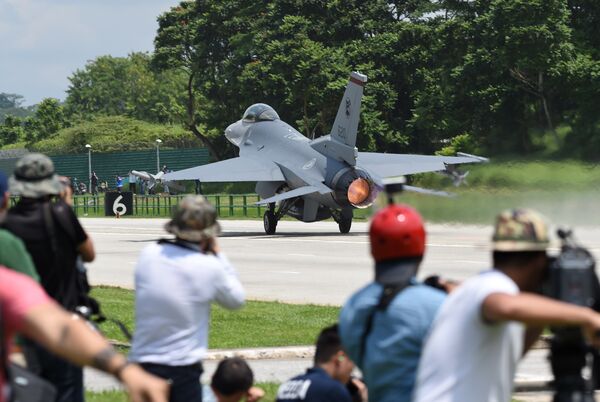
The crash of an RSAF F-16 on 8 May shortly after take-off has been attributed to an unusual gyroscopic malfunction. While the variant involved in the crash is not known, it is likely the single-seat ‘C' version (as depicted in this 2016 file photo) was involved. (Roslan Rahman/AFP via Getty Images)
A Republic of Singapore Air Force (RSAF) Lockheed Martin F-16, which crashed on 8 May, was found to have suffered simultaneous gyroscopic failure soon after take-off, according to the Singapore Ministry of Defence (MINDEF).
MINDEF said in a statement that the F-16 crashed on 8 May soon after it took off from Tengah Air Base. A joint RSAF-Lockheed Martin investigation has determined that the aircraft's pitch rate gyroscopes are to blame, MINDEF added on 18 May.
“The flight data recorder recovered from the crashed F-16 showed that its pitch rate gyroscopes gave erroneous inputs to the flight control computer (FLCC),” MINDEF said. “This led to the pilot being unable to control the plane at take-off.”
Pitch rate gyroscopes feed elevation and nose pitch data to the aircraft's FLCC. According to MINDEF, the F-16 is equipped with four pitch rate gyroscopes. “Simultaneous failure of the gyroscopes is a very rare occurrence,” the ministry said.
The malfunction suggests that the aircraft's flight control began to receive faulty pitch information soon after take-off. In a statement on 8 May MINDEF said the pilot “encountered flight control issues upon lifting off the runway” during what was meant to be a “routine training flight”.
At the time, MINDEF added that the pilot had more than 2,000 flying hours on the F-16. Janes
Looking to read the full article?
Gain unlimited access to Janes news and more...







